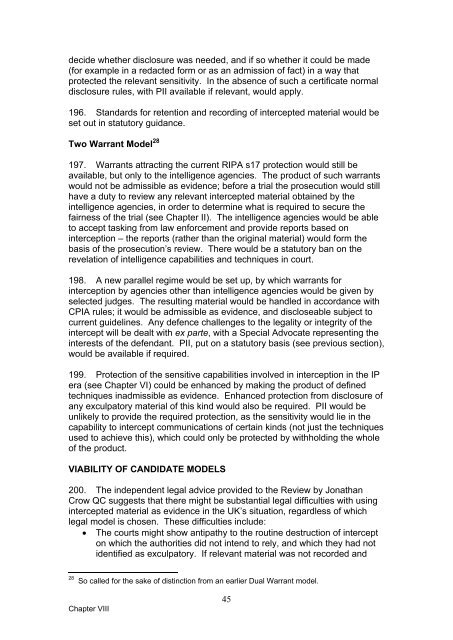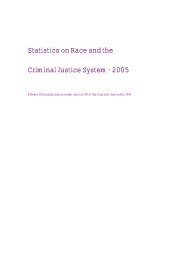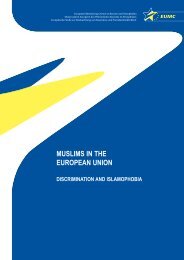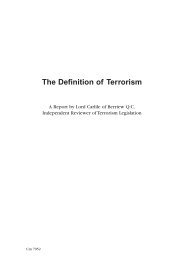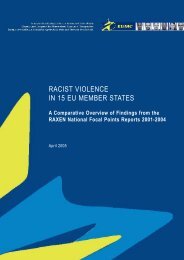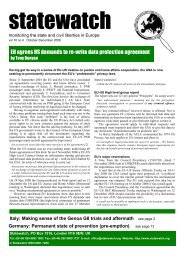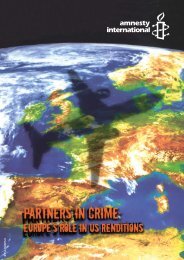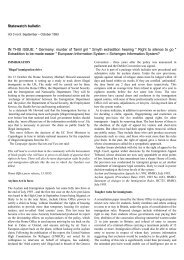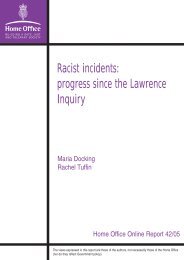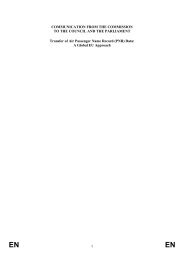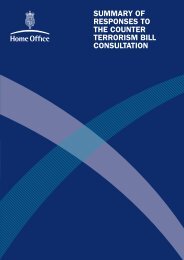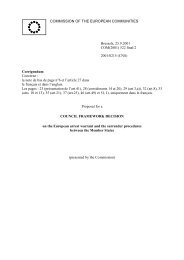Privy Council Review of intercept as evidence: report - Official ...
Privy Council Review of intercept as evidence: report - Official ...
Privy Council Review of intercept as evidence: report - Official ...
Create successful ePaper yourself
Turn your PDF publications into a flip-book with our unique Google optimized e-Paper software.
decide whether disclosure w<strong>as</strong> needed, and if so whether it could be made<br />
(for example in a redacted form or <strong>as</strong> an admission <strong>of</strong> fact) in a way that<br />
protected the relevant sensitivity. In the absence <strong>of</strong> such a certificate normal<br />
disclosure rules, with PII available if relevant, would apply.<br />
196. Standards for retention and recording <strong>of</strong> <strong>intercept</strong>ed material would be<br />
set out in statutory guidance.<br />
Two Warrant Model 28<br />
197. Warrants attracting the current RIPA s17 protection would still be<br />
available, but only to the intelligence agencies. The product <strong>of</strong> such warrants<br />
would not be admissible <strong>as</strong> <strong>evidence</strong>; before a trial the prosecution would still<br />
have a duty to review any relevant <strong>intercept</strong>ed material obtained by the<br />
intelligence agencies, in order to determine what is required to secure the<br />
fairness <strong>of</strong> the trial (see Chapter II). The intelligence agencies would be able<br />
to accept t<strong>as</strong>king from law enforcement and provide <strong>report</strong>s b<strong>as</strong>ed on<br />
<strong>intercept</strong>ion – the <strong>report</strong>s (rather than the original material) would form the<br />
b<strong>as</strong>is <strong>of</strong> the prosecution’s review. There would be a statutory ban on the<br />
revelation <strong>of</strong> intelligence capabilities and techniques in court.<br />
198. A new parallel regime would be set up, by which warrants for<br />
<strong>intercept</strong>ion by agencies other than intelligence agencies would be given by<br />
selected judges. The resulting material would be handled in accordance with<br />
CPIA rules; it would be admissible <strong>as</strong> <strong>evidence</strong>, and discloseable subject to<br />
current guidelines. Any defence challenges to the legality or integrity <strong>of</strong> the<br />
<strong>intercept</strong> will be dealt with ex parte, with a Special Advocate representing the<br />
interests <strong>of</strong> the defendant. PII, put on a statutory b<strong>as</strong>is (see previous section),<br />
would be available if required.<br />
199. Protection <strong>of</strong> the sensitive capabilities involved in <strong>intercept</strong>ion in the IP<br />
era (see Chapter VI) could be enhanced by making the product <strong>of</strong> defined<br />
techniques inadmissible <strong>as</strong> <strong>evidence</strong>. Enhanced protection from disclosure <strong>of</strong><br />
any exculpatory material <strong>of</strong> this kind would also be required. PII would be<br />
unlikely to provide the required protection, <strong>as</strong> the sensitivity would lie in the<br />
capability to <strong>intercept</strong> communications <strong>of</strong> certain kinds (not just the techniques<br />
used to achieve this), which could only be protected by withholding the whole<br />
<strong>of</strong> the product.<br />
VIABILITY OF CANDIDATE MODELS<br />
200. The independent legal advice provided to the <strong>Review</strong> by Jonathan<br />
Crow QC suggests that there might be substantial legal difficulties with using<br />
<strong>intercept</strong>ed material <strong>as</strong> <strong>evidence</strong> in the UK’s situation, regardless <strong>of</strong> which<br />
legal model is chosen. These difficulties include:<br />
The courts might show antipathy to the routine destruction <strong>of</strong> <strong>intercept</strong><br />
on which the authorities did not intend to rely, and which they had not<br />
identified <strong>as</strong> exculpatory. If relevant material w<strong>as</strong> not recorded and<br />
28 So called for the sake <strong>of</strong> distinction from an earlier Dual Warrant model.<br />
Chapter VIII<br />
45


